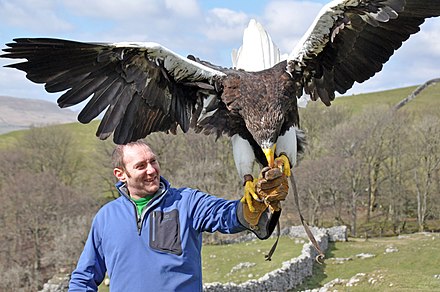Steller’s sea eagles are known to be opportunistic predators, feeding on a diverse range of prey. While their primary food source is fish, they have been observed hunting and consuming ducks as well. This blog post will explore the dietary habits of these majestic birds and provide insights into their interactions with ducks.
Steller’s Sea Eagles: Apex Predators of the Coasts
Steller’s sea eagles are among the largest birds of prey in the world, with a wingspan that can reach up to 2.5 meters (8 feet). These impressive raptors are native to the coastal regions of northeastern Asia, primarily inhabiting the coasts of Russia, Japan, and Korea. As apex predators, they play a crucial role in the ecosystem, helping to maintain a balance among the various species that inhabit their territory.
Diverse Diet: Fish, Ducks, and More
 Image source: stellers sea eagle
Image source: stellers sea eagle
Steller’s sea eagles are known to have a diverse diet, with fish being their primary food source. They are skilled hunters, capable of catching a variety of fish species, including salmon, cod, and other coastal marine life. However, their diet is not limited to just fish; these eagles have also been observed hunting and consuming ducks, as well as other water birds, small mammals, and even carrion.
Hunting Ducks: Opportunistic Behavior
While fish make up the majority of their diet, Steller’s sea eagles will not hesitate to hunt and consume ducks when the opportunity arises. These powerful birds of prey have been known to swoop down and snatch ducks from the water or the air, using their sharp talons and powerful beaks to subdue their prey.
Factors Influencing Duck Consumption
The frequency with which Steller’s sea eagles consume ducks can be influenced by several factors, including:
-
Availability of Fish: When the availability of their primary food source, fish, is high, Steller’s sea eagles may focus more on hunting and consuming fish, reducing their reliance on ducks and other water birds.
-
Habitat and Location: Steller’s sea eagles that nest and forage near areas with a high concentration of ducks, such as wetlands or coastal marshes, may be more likely to incorporate ducks into their diet.
-
Breeding Season: During the breeding season, when Steller’s sea eagles are feeding their young, they may be more inclined to hunt and consume ducks to meet the increased nutritional demands of their offspring.
Hunting Techniques and Strategies
Steller’s sea eagles employ a variety of hunting techniques to capture their prey, including ducks. They may soar high above the water, scanning for potential targets, and then dive down with incredible speed and precision to snatch their prey from the surface. They have also been observed perching on high vantage points, such as trees or cliffs, and waiting patiently for the right moment to strike.
Importance in the Ecosystem
As apex predators, Steller’s sea eagles play a crucial role in the ecosystem. By hunting and consuming a variety of prey, including ducks, they help to maintain a balance among the different species within their habitat. Their presence is a testament to the health and diversity of the coastal environments they inhabit.
Conservation Efforts
Steller’s sea eagles are classified as Vulnerable on the IUCN Red List of Threatened Species, with their population estimated to be around 5,000-10,000 individuals. Conservation efforts are underway to protect these magnificent birds and their habitats, ensuring that they continue to thrive in the years to come.
Conclusion
In conclusion, Steller’s sea eagles are opportunistic predators that will consume ducks as part of their diverse diet, although fish remains their primary food source. The frequency of duck consumption can be influenced by various factors, such as the availability of fish, habitat, and breeding season. As apex predators, these birds play a crucial role in the ecosystem, and their conservation is of utmost importance.

